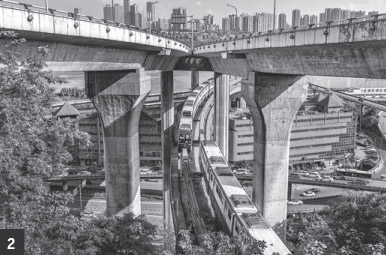Chongqing making fast tracks to Europe
- Andrew Moody,Tan Yingzi
 0 Comment(s)
0 Comment(s) Print
Print E-mail China Daily, 08 01, 2018
E-mail China Daily, 08 01, 2018

Chongqing, a city surrounded by mountains, has become a key trading hub in China. [Photo by Zhou Zhiyong/for China Daily]
Once viewed as being at the wrong end of the Yangtze River, which links the city with Shanghai, Chongqing is developing into one of China's most important trading hubs, which is having a regenerative effect on the entire western region. Last year, Chongqing's GDP grew by 9.3 percent, significantly higher than the 6.9 percent nationally.
Not only does Chongqing have road and rail links to Europe through Central Asia, it is also linked to Southeast Asia through the Southern Transport Corridor. This links Chongqing by rail to Qinzhou Port in the Guangxi Zhuang autonomous region, providing a gateway to such trade partners as Thailand, Vietnam, Malaysia and Singapore.
As a result, Europe also now has a land connection with Southeast Asia, with Chongqing the vital link.
At the center of all this activity is the Liangjiang New Area, which occupies 1,205 square kilometers in Chongqing.
It was the third State-level economic development zone of its kind when it was created in 2010.
In the meeting room at the Jinshan Building, which houses the headquarters of the new area on Jinyu Avenue, Li Guang, the 55-year-old vice-president of the Liangjiang New Area Investment Invitation Group, said: "The railway connection has been very important for development here. Goods can be transported in and out of Chongqing and we have become a logistics hub for goods from the rest of China and also from Southeast Asia to Europe.
"We are building a new transfer center here to facilitate this. It is all part of the opening up of the west of China as part of the country's Belt and Road Initiative."
Liangjiang New Area - its name means "two rivers" in Chinese, with the Yangtze and Jialing rivers converging in Chongqing - is home to 130 of Chongqing's 250 Fortune 500 companies and last year attracted one-third, or $3.3 billion, of the city's $10 billion of inbound investment.




